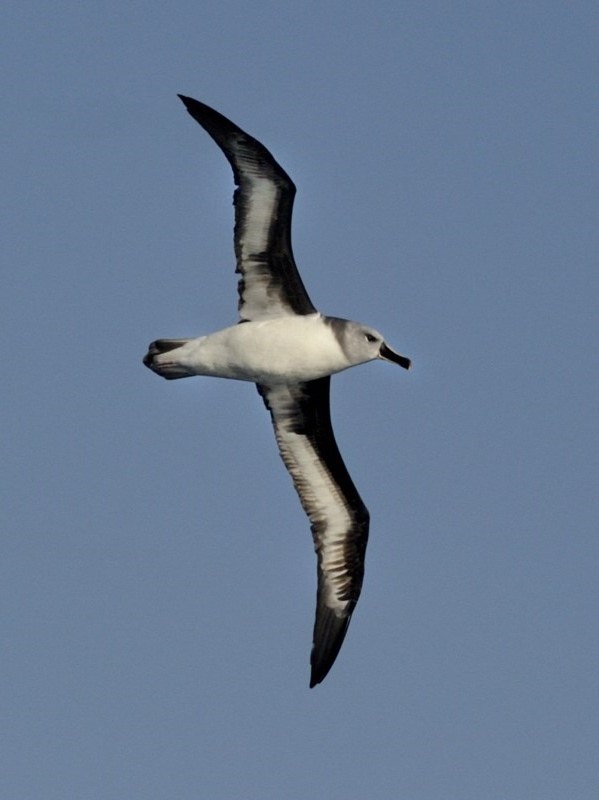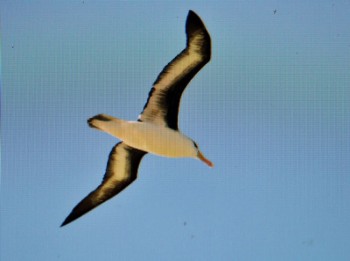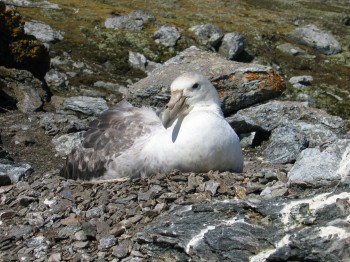It is now well known that ACAP-listed albatrosses as well as burrowing petrels face fatal attacks on their chicks by House Mice Mus musculus on Gough Island in the South Atlantic, including on the Critically Endangered and near island-endemic Tristan Albatross Diomedea dabbenena – as regularly reported in ACAP Latest News (click here). Following more than a decade of research and planning, the Royal Society for the Protection of Birds (RSPB; BirdLife International’s UK partner) is now seeking an experienced person to assist the RSPB's Globally Threatened Species Programme in the development of a mouse eradication project as part of the Gough Island Restoration Programme.
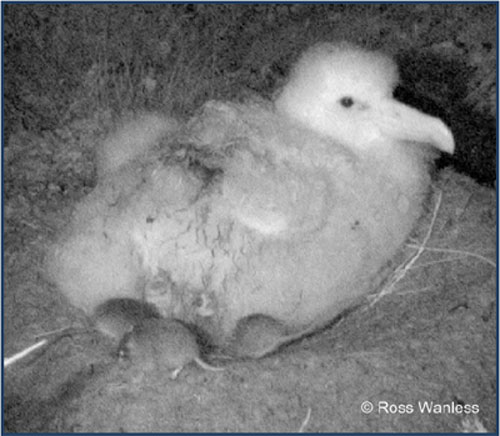
The original proof that Gough's ''killer" mice attack Tristan Albatross chicks, night-time photograph taken in winter 2004 by Ross Wanless
The following text is taken from the job description for a Restoration Programme Operational Advisor:
“Evidence clearly shows that if mice are not eradicated from Gough Island they will continue to drive two endemic British birds, the Tristan albatross and the Gough bunting, towards extinction. After many years of investment, all outstanding operational questions relating to the eradication of mice from Gough Island have now been successfully addressed. Following detailed consideration of the risks and benefits of the programme, a two phased approach to the entire programme has been proposed.
We require a person experienced in the operational preparation and management of complex rodent eradications by aerial baiting. This person will advise, assist and at times lead on developing the procurement plan along with all other planning documentation necessary to implement the mouse eradication component of the programme.”
Click here to obtain more information on the advertised post. The closing date for applications is 8 October 2015.
Click here to access RSPB reports on Gough's mice, as well as the island's management plan.
With thanks to John Kelly, RSPB Globally Threatened Species Programme Manager for information.
John Cooper, ACAP Information Officer, 12 September 2015
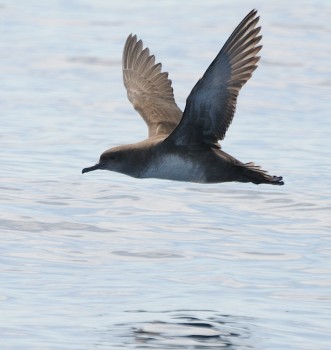

 English
English  Français
Français  Español
Español 